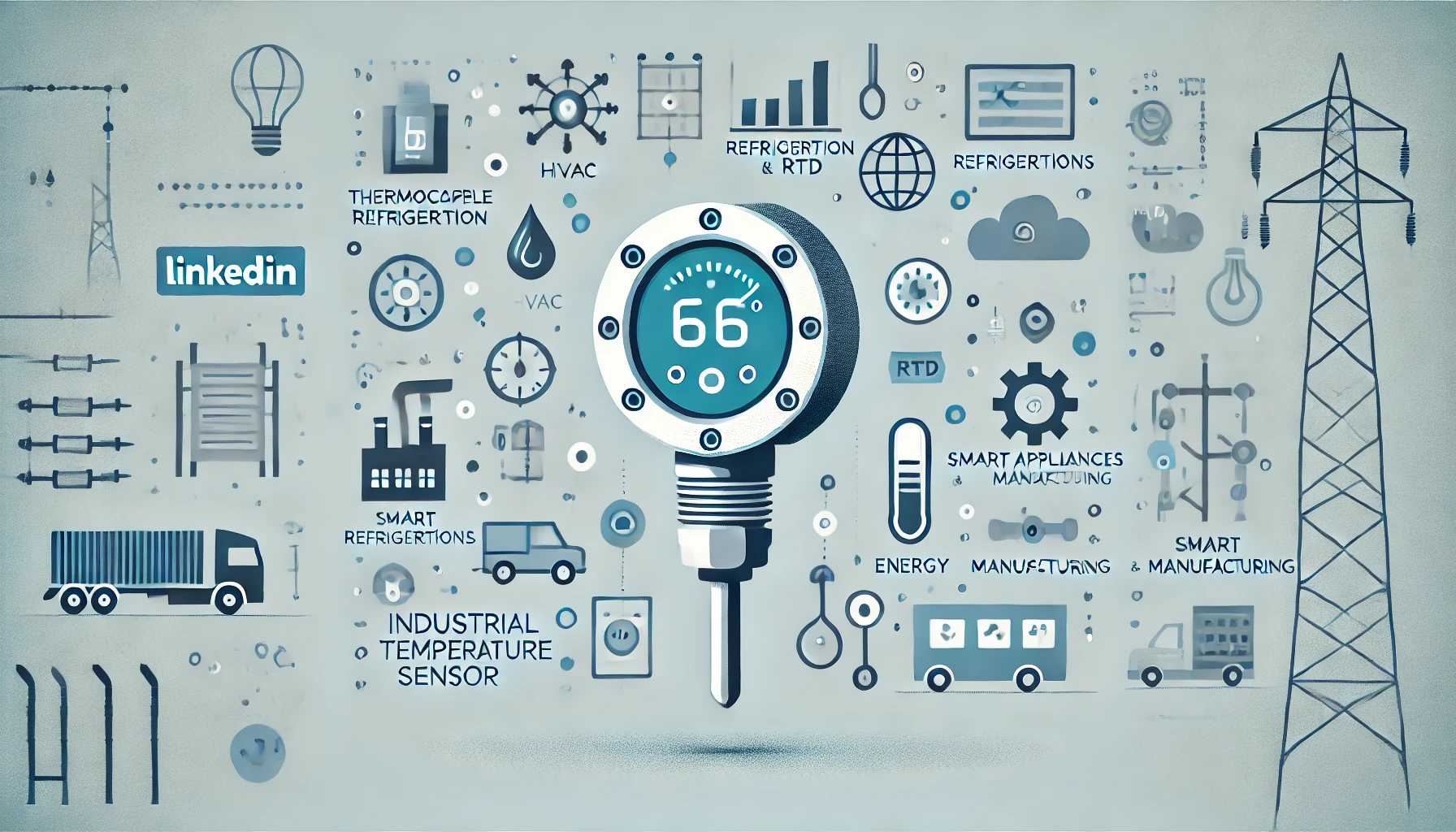Maintaining optimal temperature is essential across industries, from manufacturing to food processing, to ensure quality, safety, and efficiency. Temperature sensors provide the necessary monitoring and control. In this article, we explore the types of industrial temperature sensors, their applications, and the importance of choosing the right one.
What Are Industrial Temperature Sensors?
Industrial temperature sensors are devices that monitor and control temperature in industrial settings, providing critical feedback for quality control and safety. They convert thermal energy into electrical signals readable by control systems.
Importance of Temperature Measurement Across Industries
- Manufacturing: Temperature impacts product quality, especially in metal fabrication, where precise heating is necessary for desired properties.
- Food & Beverage: Temperature control prevents spoilage and maintains food safety.
- Pharmaceuticals: Drugs often require specific temperatures to retain their efficacy.
- HVAC: Temperature sensors in heating, ventilation, and air conditioning systems ensure indoor comfort and energy efficiency.
- Chemical Processing: Temperature significantly affects reaction rates and quality in chemical production.
Types of Industrial Temperature Sensors
- Thermocouples Description: Consist of two different metals that create a voltage when heated, proportional to temperature.Advantages: Wide range (-200°C to 1,700°C), fast response, robust for harsh environments.Applications: Used in metal processing, furnace monitoring, and power generation.
- Resistance Temperature Detectors (RTDs) Description: Made of platinum, RTDs change resistance with temperature, providing precise measurements.Advantages: High accuracy and stability, suitable for a wide temperature range.Applications: Common in HVAC, food processing, and chemical industries.
- Thermistors Description: Temperature-sensitive resistors that change resistance significantly with temperature shifts.Advantages: Highly sensitive, compact, and cost-effective.Applications: Ideal for medical devices, automotive, and electronics.
- Infrared Temperature Sensors Description: Measure temperature via infrared radiation, allowing for non-contact monitoring.Advantages: Fast response and high-temperature suitability.Applications: Useful for electrical equipment, food processing, and HVAC.
- Bimetallic Temperature Sensors Description: Use two metals that expand differently with temperature changes, providing a reading through mechanical movement.Advantages: Simple, durable, and power-free.Applications: Used in HVAC and basic heating systems.
Key Considerations for Selecting a Temperature Sensor
When choosing a sensor, consider:
- Temperature Range: Ensure the sensor can operate within your application’s range.
- Accuracy: RTDs are more accurate, while thermocouples are versatile.
- Response Time: Quick responses may be required for dynamic processes.
- Environmental Factors: Conditions like dust, humidity, and exposure to chemicals can affect performance.
- Cost & Installation Space: Budget and space constraints may influence the decision.
Applications of Temperature Sensors
- Manufacturing: Sensors help control temperatures in metal, plastic, and textile production.
- Food & Beverage: Ensure safe cooking, storage, and refrigeration to meet health standards.
- HVAC: Regulate temperature in buildings for comfort and efficiency.
- Chemical Processing: Critical in controlling reaction rates for quality and safety.
- Automotive: Widely used to monitor engine, cabin, and battery temperatures in vehicles.
Conclusion
Choosing the right temperature sensor is vital for accurate monitoring and control, leading to improved safety, efficiency, and quality. With advancements in technology, sensors like thermocouples, RTDs, thermistors, and infrared sensors provide tailored solutions for specific needs. Industrial players can benefit from informed sensor selection, enhancing operational performance and product quality.





